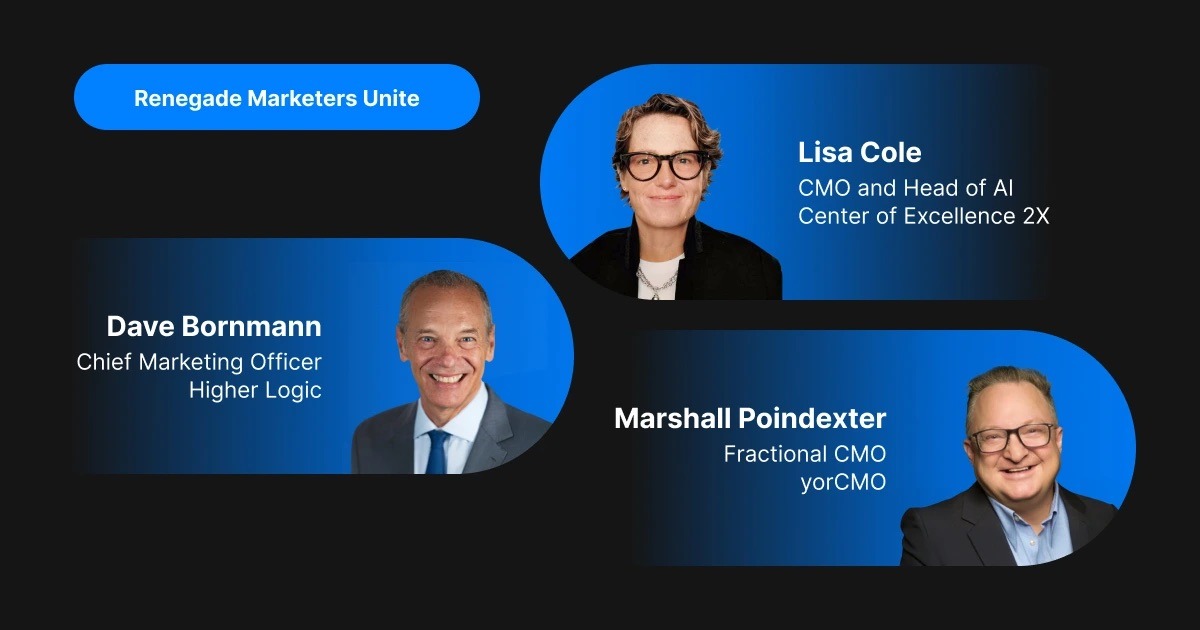June 23, 2025 | Blog
How to right-size field marketing without losing business alignment

At some point, every marketing leader faces a version of the same mandate: do more with less. Sometimes it’s about reducing the total marketing spend. Sometimes it’s a call to rebalance programs vs. headcount. Sometimes the problem is broader: too many non-quota-carrying roles across the go-to-market org and a revenue efficiency ratio that’s misaligned.
Whatever the reason, the result is the same: marketing is on the hook to reduce headcount. Not just through attrition. A real reduction.
And when that moment comes, you can’t afford to approach it like a spreadsheet exercise. You need a strategy. One that protects performance and earns cross-functional buy-in, especially if you’re going to touch field marketing.
Why field marketing gets bloated fast
As the company grows, more product lines, more brands, more business units, more regions, the field marketing function often scales horizontally to keep up. Every sales region, geo, or brand expects “their own marketer.” Someone embedded in their team. Someone who can run local campaigns, support reps, join calls, and customize decks.
What starts as a responsive model turns into sprawl. And when you step back and look at actual contribution to revenue or growth, it’s often out of proportion.
The easy cuts vs. the hard ones
If the company is simplifying, consolidating brands, exiting regions, and sunsetting products, then marketing reductions are straightforward. Support shrinks in lockstep with the business.
But if the rest of the business isn’t simplifying, and only marketing is being told to shrink, you’ve got a problem. Because now you’re being asked to cut without a mandate, without clarity, and without alignment.
Start with growth, not headcount
Here’s what works: anchor to growth.
Start by asking, where does the growth need to come from?
Whether it’s market share by region, revenue by product line, or market expansion targets, that gives you a rational framework for prioritization. If you can’t cover everything, cover what matters most. The top 80% of revenue. The growth bets for the next 18 months.
This lets you defend why some regions get more support than others, and it turns the conversation into a business one, not a marketing org chart one.
Bring sales and product along early
Once you’ve built your growth-aligned model, bring it to your peers in sales, product, and brand. Not as a heads-up, but as a collaborative conversation:
“Here’s where we’re investing in field support. Here’s what we’re pulling back. We based this on revenue contribution and growth priorities. If we need to revisit that, let’s do it together.”
You’ll gain trust and alignment instead of creating confusion or resentment later.
It’s not just where you cut, it’s what you cut
This is the piece most leaders miss.
Once you know where you need resources, the next question is: what work are those roles actually doing?
This is especially important in field marketing. Because here’s the truth: field marketing often becomes a catch-all for sales support; and not always strategic sales support.
When I’ve dug into bloated field orgs, I’ve found marketers doing things like:
- Packing tablecloths for regional roadshows
- Printing flyers and name badges
- Building cold-call prospect lists for SDRs
- Managing webinar logistics, vendor invoices, or email sends
These are not marketing-level activities. They’re important; they may even be necessary, but they don’t require marketing talent, and they definitely don’t justify marketing compensation.
You must get eyes on the body of work.
Audit the work, then reallocate the right way
One of the best ways to do this is to pressure-test the function by outsourcing part of it. As soon as you try to externalize field marketing tasks, the hidden workload surfaces, and you’re forced to evaluate:
- Is this work we should be doing at all?
- If it must be done, does it belong in marketing?
- If it stays in marketing, can it be automated, outsourced, or streamlined?
You’ll usually find three categories of work:
- Strategic knowledge work that’s core to the business – keep this in-house.
- Functional marketing execution – consider outsourcing to get leverage and best practices.
- Low-value admin work – automate or reassign; it doesn’t belong in marketing.
Field marketing isn’t the problem. But it can easily become a magnet for noise. It takes strong leadership to separate the signal from the noise and clean up the org accordingly.
Localize what matters, where it matters most
Even after you’ve figured out where to place resources and what work belongs in-house, there’s still a critical operational layer to address: localized marketing execution.
When I had to restructure field marketing in a global organization, one of the first things I did was work cross-functionally with the product team to understand where the next three years of revenue were expected to come from, by country.
That let me build a coverage model that ensured 90% of that revenue opportunity had dedicated field marketing support.
But that was only part one. The next lever was language and localization.
You can’t claim to support a market if your messaging isn’t translated, localized, and culturally appropriate. But full translation of everything, everywhere, isn’t scalable.
So we developed a tiered localization framework, driven by:
- Country-level revenue potential and growth goals
- Type of asset (e.g., product sheets, demo videos, email sequences, web pages)
- Budget available for localization and QA
We made decisions like:
- Which assets would be localized vs. left in English
- Which would use human + automation, automation-only, or double human QA
- Where full translation QA was critical to minimize regulatory or brand risk
- Where fast-turn automation was good enough to move quickly
This ensured that we weren’t just covering the right markets with people, we were covering them with marketing they could actually use. In their language. With enough nuance and quality to drive real results.
Final thought: Right-sizing means rethinking the work, not just the people
You can’t fix bloated headcount if you’re not also willing to fix bloated workflows. And you can’t fix field marketing if you don’t know what work is actually flowing through the function.
Start with where growth needs to come from, then look at what the work actually is. Then, make sure your localized execution supports that growth: in the language, format, and quality level required.
This isn’t just budget optimization. It’s operational leadership. And it’s how marketing earns its seat at the strategy table, even when the ask is to do more with less.
Need support rethinking how your field marketing scales?
2X helps enterprise marketing teams right-size with clarity, streamlining field execution, scaling what works, and cutting what doesn’t.
Let’s build a leaner, sharper, growth-ready engine together.



